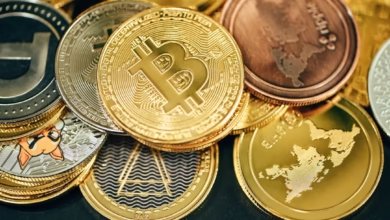Currency Under Pressure: Analyzing Interest Rates, Geopolitics, and Trading Strategies in the Forex Market

In the ever-evolving landscape of global finance, understanding the nuances of currency exchange rates is essential for investors, traders, and policymakers alike. This article delves into the intricate relationship between interest rates and currency fluctuations, exploring how these financial indicators shape the dynamics of forex markets. We will also examine the profound impact of geopolitical events, which can create ripples of uncertainty and opportunity across currency pairs. By analyzing the pivotal role of central banks in influencing monetary policy, we aim to provide insights into how their decisions affect currency values and trading strategies.
Additionally, we will discuss the implications of inflation on forex trading, highlighting how economic conditions can dictate market movements. The article will further explore carry trading, where investors leverage interest rate differentials to maximize returns, and consider the rise of digital currencies and their disruptive potential on traditional forex markets. Finally, we will outline how economic indicators can be utilized to predict currency movements, empowering traders to make informed decisions in this complex financial arena. Join us as we navigate these critical topics to better understand the forces that drive currency exchange rates and the strategies that can be employed to capitalize on them.
- 1. **Interest Rates and Currency Fluctuations: A Deep Dive into Exchange Rate Dynamics**
- 2. **Geopolitical Influences: Understanding Their Role in Forex Market Trends**
1. **Interest Rates and Currency Fluctuations: A Deep Dive into Exchange Rate Dynamics**
Interest rates play a pivotal role in determining currency values and influencing exchange rate dynamics. When a country's central bank raises interest rates, it typically results in an influx of foreign capital as investors seek higher returns on investments denominated in that currency. This increased demand can lead to appreciation of the currency. Conversely, when interest rates are lowered, capital may flow out of the country, leading to depreciation.
The relationship between interest rates and currency values can be explained through the lens of the interest rate parity theory, which posits that the difference in interest rates between two countries should be reflected in the exchange rate. For example, if the U.S. Federal Reserve raises rates while the European Central Bank holds rates steady, the dollar is likely to strengthen against the euro. This dynamic not only affects spot exchange rates but also influences forward contracts and options as traders hedge against future movements.
Additionally, central bank communication and guidance regarding future interest rate expectations significantly impact currency fluctuations. Market participants closely monitor central bank statements for indications of monetary policy direction, which can create volatility in the forex market even before any actual changes in rates occur.
Furthermore, the impact of interest rates extends to inflation expectations. Higher interest rates often correlate with lower inflation, which can enhance a currency's value as purchasing power is preserved. Conversely, if inflation rises unexpectedly, leading central banks to maintain lower interest rates, currencies may weaken against those with tighter monetary policies.
Understanding the interplay between interest rates and currency values is crucial for forex traders. Strategies that capitalize on interest rate differentials, such as carry trading, allow investors to profit from the yield spread between currencies. This strategy becomes particularly attractive in environments where central banks are diverging in their monetary policies, creating opportunities for significant gains.
In summary, the fluctuations in currency values are heavily influenced by interest rate changes and the broader economic context, making it essential for traders and investors to stay attuned to central bank actions and market expectations.
Interest rates play a crucial role in determining currency exchange rates, as they directly influence the attractiveness of a currency to investors. When a country raises its interest rates, it typically results in an influx of foreign capital seeking higher returns, which strengthens the currency. Conversely, lower interest rates can lead to currency depreciation. Traders closely monitor central bank announcements and economic indicators to anticipate changes in interest rates and their potential impact on forex markets.
Geopolitical events, such as elections, trade agreements, and conflicts, can cause significant volatility in forex markets. Uncertainty surrounding these events often leads to fluctuations in investor confidence and risk appetite. For instance, political instability in a country may prompt traders to sell its currency, while positive developments can bolster its strength. Understanding the geopolitical landscape is essential for forex traders as it aids in predicting potential market movements.
When trading major currency pairs like EUR/USD and GBP/USD, traders employ various strategies to capitalize on market trends. Technical analysis, which involves studying price charts and patterns, is a common approach. Additionally, fundamental analysis—assessing economic data, interest rates, and geopolitical factors—helps traders make informed decisions. A combination of these analyses often yields the best results, allowing traders to identify entry and exit points effectively.
Central banks are instrumental in shaping currency values through their monetary policies. By adjusting interest rates and implementing quantitative easing or tightening measures, central banks can influence inflation and economic growth, which in turn affects currency strength. Traders closely watch central bank meetings and statements for hints about future policy changes.
Inflation is another critical factor affecting forex trading strategies. High inflation can erode purchasing power and lead to currency depreciation. Traders often use inflation indicators, such as the Consumer Price Index (CPI), to gauge the economic health of a country and anticipate currency movements. In contrast, lower inflation rates can enhance a currency's value, making it essential for traders to incorporate inflation data into their strategies.
Carry trading is a popular strategy that exploits interest rate differentials between currencies. Traders borrow funds in a currency with a low-interest rate and invest in a currency with a higher rate, effectively profiting from the interest rate spread. This strategy can be lucrative, especially in stable economic environments, but it also carries risks, particularly during periods of heightened market volatility.
The rise of digital currencies has introduced new dynamics to traditional forex markets. Cryptocurrencies challenge the established currency framework, offering decentralized alternatives that appeal to investors seeking diversification and new opportunities. As digital currencies gain acceptance, they influence trading behaviors and market sentiment, prompting traditional traders to adapt their strategies accordingly.
Economic indicators, such as GDP growth, employment figures, and trade balances, serve as essential tools for predicting currency movements. Traders analyze these indicators to assess a country's economic health and make informed trading decisions. By understanding the correlations between economic data and currency performance, traders can better navigate the complexities of the forex market and enhance their chances of success.
2. **Geopolitical Influences: Understanding Their Role in Forex Market Trends**
Geopolitical events play a significant role in influencing currency exchange rates and shaping the dynamics of the foreign exchange (forex) market. Factors such as political instability, conflicts, trade negotiations, and elections can create uncertainty that affects investor sentiment and market behavior.
When geopolitical tensions arise, investors often seek to mitigate risk by moving capital to perceived safe-haven currencies, such as the US dollar (USD), Swiss franc (CHF), or Japanese yen (JPY). For instance, during times of heightened geopolitical risk, currencies from countries with stable political environments tend to strengthen, while those from regions experiencing turmoil may weaken. This shift can lead to increased volatility in the forex market as traders react to real-time news and developments.
Trade agreements and tariffs also have a profound impact on currency values. Positive negotiations can lead to currency appreciation as confidence in the economy grows, while negative outcomes can result in depreciation. Additionally, economic sanctions imposed on countries can drastically alter trade relationships, influencing the supply and demand dynamics for their currencies.
Elections and changes in government can further affect forex markets by altering fiscal and monetary policies. For example, a new administration may promise reforms that could stimulate growth, leading to an appreciation of the country's currency. Conversely, if a government is viewed as unstable or ineffective, it can result in capital flight and depreciation of the currency.
In summary, geopolitical influences are crucial in understanding trends in the forex market. Traders must stay informed about global events, as these factors can create both opportunities and risks in currency trading. By analyzing the interplay between geopolitics and currency movements, traders can develop more informed strategies to navigate the complexities of the forex landscape.
In conclusion, the intricate relationship between interest rates, geopolitical events, and currency exchange rates underscores the complexity of the forex market. As we have explored, central banks play a pivotal role in shaping currency values through their monetary policies, which directly influence interest rates. Geopolitical events add another layer of unpredictability, impacting market sentiment and driving fluctuations in major currency pairs like EUR/USD and GBP/USD.
Traders must remain vigilant in analyzing economic indicators and inflation trends to devise effective trading strategies. The carry trade remains a viable approach for those looking to capitalize on interest rate differentials, yet it is crucial to navigate this landscape with a keen awareness of the evolving digital currency market, which is reshaping traditional forex dynamics.
Ultimately, successful forex trading requires a multifaceted understanding of these interconnected elements. By integrating insights from interest rates, geopolitical factors, and emerging digital trends, traders can better position themselves to anticipate currency movements and adapt to the fast-paced world of foreign exchange.





